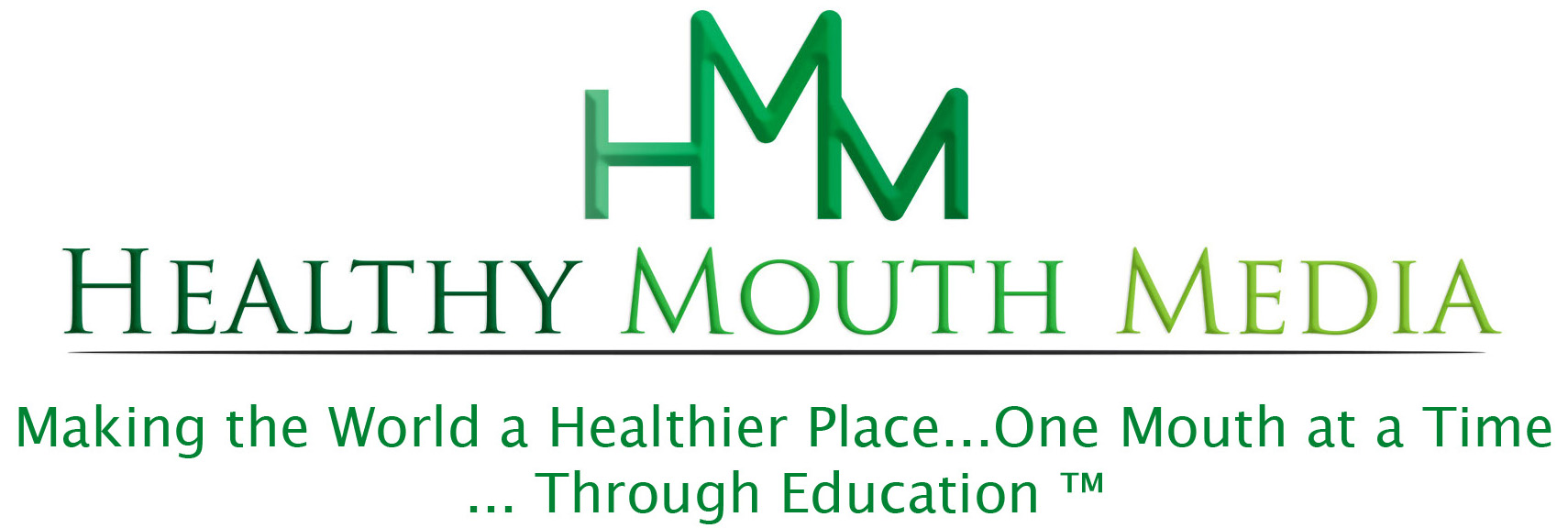Breathe Through Your Nose Week continues…Part 2 of my conversation with Patrick McKeown
Did you know…Mouth-breathing is identifiable in an infant—by the right health-care professional? Read on…
…last time I shared part of my conversation with founding Buteyko Clinic International breathing expert Patrick McKeown at AAOSH’s 5th Annual Scientific Session in Dallas. Patrick gave us some basic information on how slow, shallow, controlled breathing enhances the way our bodies utilize oxygen, and how we can use a simple exercise to get in touch with our breathing. If you haven’t seen this video, please take (less than) 5 minutes and watch it now: Use your mind to calm your breath
We’ve all been taught to take big, deep breaths…
But here’s the thing: your body’s carbon dioxide (CO2) level determines how long you can hold your breath; a higher normal level of CO2 in your blood corresponds to holding your breath longer—and being more metabolically in tune. Raising the levels of CO2 in your blood helps lower breathing volume to a normal level, and reduces the effects of overbreathing. When you overbreathe habitually, you drive your typical CO2 level down too far—this has the effect of making the brain’s receptors more sensitive,1 thus making you want to breathe more—or take a breath sooner.
If you haven’t watched Patrick’s YouTube video yet, please do so Use your mind to calm your breath. This Control Pause test (CP) helps assess how you’re handling CO2 in your blood. We need CO2 to release oxygen from red blood cells to muscles and other organs. By reduces CO2 levels, overbreathing compromises your ability to deliver oxygen to the cells of your body.
Try it.
The lower your CP time, the more out-of-sync your breathing volume is with your body’s oxygen requirements. That means—for one thing—the more closely your everyday breathing will resemble hyperventilation. If it’s REALLY low (20 seconds or shorter), you’ll probably be more apt to experience fatigue, breathlessness, nasal blockages, and sleep-disordered breathing—including obstructive sleep apnea (OSA).
The higher your CP time (anyone approach 40 seconds? I managed 24…), the better the match between your breathing volume and the satisfaction of your body’s oxygen needs—and the better you’re using CO2 for something other than a useless waste gas. Don’t feel too bad if you didn’t last…most of us in Western cultures score under 15 seconds, underscoring our prevalence of habitual overbreathing.
Patrick also talked about another key gas our bodies produce: nitric oxide (NO). Studies have shown that NO serves a pivotal function in blood vessel regulation, neurotransmission, protective immune system function, and respiration.2, 3
NO travels from the back of the nose and sinuses into the lungs (where it dilates the air passages AND blood vessels), thus working to maximize gas exchange in the lungs (AAOSH author Dr. Mike Roizen of the Cleveland Clinic—and his co-author, Dr. Oz himself—weigh in on this one).4 NO works quickly, and doesn’t hang around long before it’s processed and metabolized—so you need a constant supply of it for optimal breathing and blood flow.
Because NO is continuously released into the nasal airways, its concentration depends on how fast—or how slowly—you breathe. Specifically, nasal NO concentrations are higher at lower flow rates.. So, the more slowly you breathe, the higher the concentration of NO going to your lungs, 5 and the more open their airways and blood vessels.
Given these findings, it’s not hard to see how breathing more slowly—through your nose—can optimize those critical levels of NO. If you want a really good example of what boosting NO levels can do, just ask someone who benefits from Viagra——or similar drugs that increase NO production —resulting in increased blood flow to certain “critical areas”.
Again—most importantly (as the airlines’ mantra continually reminds us): ‘secure your own oxygen mask before assisting others‘—specifically, first: assess your own breathing.
Then, turn your attention to those who depend on you—your children especially…they stand to gain—or lose—the most, if breathing issues aren’t caught and corrected early (ideally, before age 9—by then, most of the damage of overbreathing has already been done).
Here are the most basic messages Patrick recommends for you—the patient and health-care consumer:
- Breathe through your nose, and keep your tongue positioned correctly (on the roof of your mouth)
- Breathe gently, softly, and slowly
- Pay attention to your breath—such attention embodies a tremendous mindfulness aspect.
- Once you learn to optimize your breath: Practice—the truth is in the practice.
Starting those crucial conversations
Interdisciplinary collaboration is a HUGE theme with AAOSH. One of its missions is to optimize a dialog among health-care professionals, mainly physicians and dentists and, from Patrick’s perspective, breathing experts like him.
But unfortunately, medical ‘culture’ does not change quickly. When I asked Patrick about buy-in on these breathing practices from pediatricians, he commented that their attitudes range from not supportive to outright resistant to the nose-breathing paradigm, and that many Western exercise/meditation practitioners—however well-intentioned—are giving misinformation.
He notes that many medical textbooks cover the oxygen-hemoglobin dissociation curve, a basic algorithm every medical and dental student learns. It represents that within a certain safety range, the more oxygen-saturated the red blood cells are, the less efficiently they function to offload oxygen and carry away waste. Introduction of more CO2 (even better, acclimation over time to higher levels of CO2 ) allows your red cells a balance, enabling them to deliver oxygen to each cell more efficiently.
Patrick’s basic bottom line regarding the breathing techniques he teaches:
“The best thing about theory is practice—take it home—practice it and see if it brings tangible health benefits within 1-2 weeks.”
My recommendation: DO IT !! And do a reality check with how well this fits with your current method of exercise, meditation, yoga, Pilates, and your basic sense of calm, presence, and mindfulness. Let me know what you find.
And please—share what you learn with your doctors (pediatricians, especially—they are a tough crowd!), dentists, fitness coaches, whomever—and let me know what you find there too.
Patrick also recommends that we be aware of the epidemic presence of obstructive sleep apnea, or OSA (another major AAOSH focus, as we’ll see in upcoming posts), and of the contribution of mouth breathing to OSA.
The takeaway message here: poor breathing habits are far easier to treat in childhood than in adulthood.
Parents: please watch your kids for mouth breathing, snoring, poor posture, and jaws that don’t seem far enough forward when you look at them in profile…I saw too many of those during my own years in practice…mostly among 20-somethings. As you saw in my opening bullet:
Mouth breathing is identifiable in an infant—by the right health-care professional.
To that point, Patrick also stresses the importance of MYOFUNCTIONAL THERAPY (watch for my upcoming post from my interview with myofunctional therapy expert Joy Moeller… What’s myofunctional therapy? Ask Joy Moeller) in the prevention and correction of craniofacial growth problems caused by improper breathing. Joy reinforces how critical it is to spot these problems EARLY!
And remember: Patrick’s latest book, The Oxygen Advantage, is a fantastic read, especially if you’d like to bring the benefits of high-altitude training to whatever elevation you live at, by adapting your own breathing techniques—it’s a truly fascinating and ground-breaking approach, so I highly recommend it!
As we continue reporting on our interviews with the experts and key opinion leaders we interviewed at AAOSH, Bonnie and I look forward to bringing you more information that can improve your health and wellness and that of your family.
Our very sincere thanks to everyone we spoke with at AAOSH!
We hope you find these posts to be of value to you and your family. How do you think this information will help you? How you plan to use what you’ve learned?
We’d love it if you’d share your thoughts and comments below.
REFERENCES
- McKeown PG. How Fit Are You Really? The Body Oxygen Level Test (BOLT). The Oxygen Advantage: The Simple, Scientifically Proven Breathing Techniques for a Healthier, Slimmer, Faster, and Fitter You. 1st ed. New York: Harper-Collins (Wm. Morrow); 2015. p. 33.
- Rabelink AJ. [Nobel prize in Medicine and Physiology 1998 for the discovery of the role of nitric oxide as a signalling molecule]. Ned Tijdschr Geneeskd. 1998 Dec 26;142(52):2828-30.
- Culotta E, Koshland DE, Jr. NO news is good news. Science. 1992 Dec 18;258(5090):1862-5.
- Roizen MF, Oz MC. You on a diet revised: the owners manual for waist management. New York: Collins; 2008.
- Lundberg JO, Weitzberg E. Nasal nitric oxide in man. Thorax. 1999 Oct;54(10):947-52.


